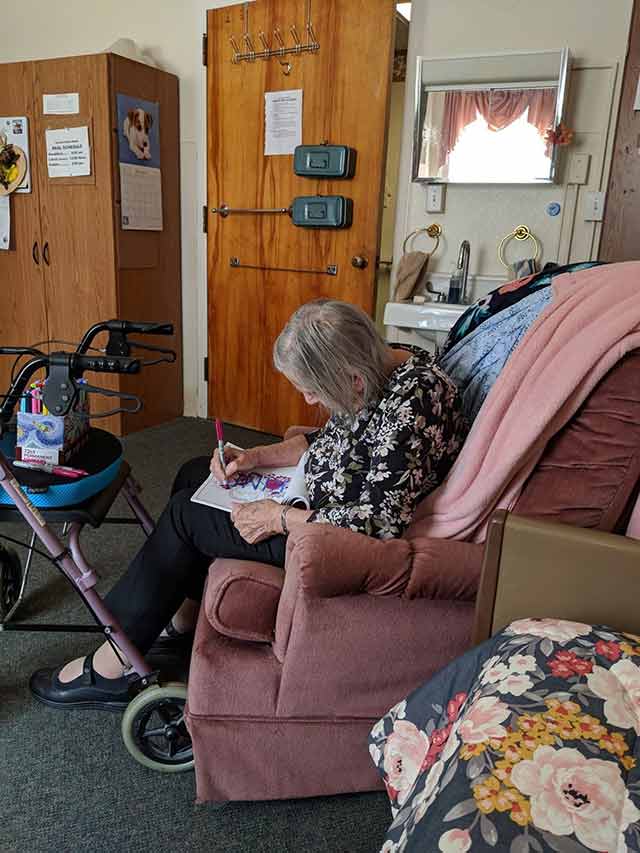Coloring Through Life With Alzheimer's
On July 27, 2022, I celebrated the third anniversary of my mom's passing. It was a day that was both sad and awfully amazing when I looked back on some of the things that were important to her.
As I hunted through a box of photos, I ran across her coloring books. I started flipping through them and was filled with wonderful memories of her.
Coloring through Alzheimer's: Finding joy in art therapy
My mom's name was Joan. She was an elementary school teacher and always loved the arts. She taught me to color when I was little. I found myself doing it again with her in my 30s. We colored through my dad's Alzheimer's and through her diagnosis as well. Then, eventually, through my dad's passing and my mom's over 4-year battle with vulvar cancer.
As my mom's cancer and dementia progressed, I felt bad because I never knew how much of her cancer diagnosis she fully understood. There were times when she was very convincing to everyone around her, making it seem as though she knew exactly what was happening. Then I would be with her on the way home from the oncologist's office, and she would ask me why we were riding in the car.
Art therapy was her meditation
Through all the life, health, and living situation changes, two things remained constant: my endless love for her and my passion for art.
When she was home, she was never far from her coloring books and her box of 72 shades of Sharpie markers. Initially, my mom would use crayons, colored pencils, or markers. For the last two years of her life, she only preferred using her Sharpie markers. I would sit back and just watch her get lost in her art. The constant repetitive motion and tactile experience put her in an ultimate state of calm. I truly believe it was her form of meditation.

As the dementia and cancer began to ravage through Mom's brain and body, dementia would not always allow for the conversations I longed to have with her. We would often just enjoy each other's company, sometimes in silence.
However, things were different when we were coloring. I would sit next to her with a duplicate of the picture she had. We would simultaneously shade the identical picture together. She absolutely loved it when we did this. I had now entered into her world, even if only for an hour or two. It always amazed me how much her verbalizations increased when we were creating art. Despite the disease's impact on her brain, when she created art, she was able to express herself.
Finding connection beyond words
My mom loved colors. She was the one who taught me about the connection between the two. Mom always told me that every shade had a meaning: yellow represented happiness, blue represented sadness, red represented anger, orange represented excitement, and white represented peace, and so on.
Again, these were just her interpretation of what they meant to her and how they made her feel. I was an extremely shy girl, so my mom tried to use art, dance, and writing as outlets for me to express myself. I am very thankful to her for introducing different art forms and interweaving their emotional meanings from childhood.
Mom's last piece of art
The month before Mom passed, she had to move to the hospice wing of a nursing home. She did not fully understand why she had to move. Unfortunately, she just could not process how much care she needed and required. It was heart-wrenching for me to watch the decline.
The last picture she colored was symbolic to me. It was a pair of sneakers using two different shades of blue. Mom made it clear to me by using blue that she was sad about her impending move. To the very end, she still communicated with me the best way she knew how, through the language of color.

Share your journey with art therapy with us in the comments below!

Join the conversation